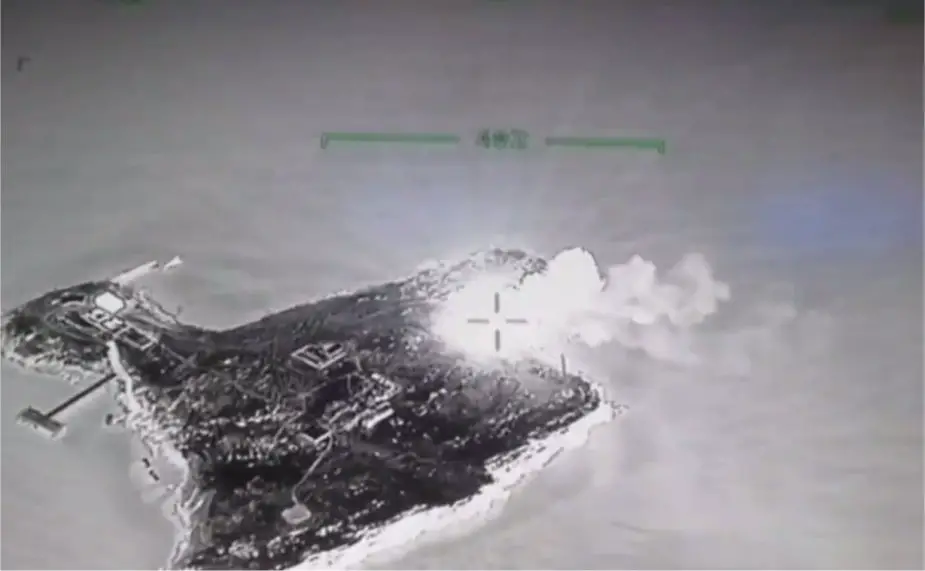According to a tweet published by Restitutor Orientis on May 9, 2022, a Ukrainian Bayraktar TB2 UCAV has destroyed one Russian Mil Mi-8 helicopter on the Snake Island.
Follow Air Recognition on Google News at this link
 Mil Mi-8 helicopter destroyed by a Ukrainian TB2 drone (Picture source: Ukrainian MoD)
Mil Mi-8 helicopter destroyed by a Ukrainian TB2 drone (Picture source: Ukrainian MoD)
The Mil Mi-8 is a medium twin-turbine helicopter, originally designed by the Soviet Union, and now produced by Russia. In addition to its most common role as a transport helicopter, the Mi-8 is also used as an airborne command post, armed gunship, and reconnaissance platform.
The helicopter was developed at the beginning of the 1950s as a successor to the Mi-4. The helicopter made its first flight on 9 June 1961; a prototype of the final two-engine version (of NATO code "HIP-B") flew for the first time on 17 September 1962.
Production of the series commenced in 1965. The helicopter fuselage is of a classic design made of light alloy. The cockpit has three seats. The cargo compartment is 5.34 meters long, 2.32 m wide, and 1.8 m high. There is a large sliding door at the left front part of the fuselage, and at the rear there is a two-wing loading door.
The helicopter has a three-wheel non-retractable landing gear with a double-tiered front leg. There are mountings at each side of the fuselage for additional fuel tanks for a total capacity of 1,830 liters of fuel.
The helicopter is driven by two turbo-shaft TV2-117A engines with an output of 1,120 kW each and, for a short time up to 1,250 kW each. The basic serially produced multipurpose transport version can accommodate up to 24 personnel, or 4,000 kg of cargo, or 12 stretchered patients.
The cargo compartment is equipped with a winch having a capacity up to 150 kg. Under the fuselage, these is a mounting for the transport of cargo up to the weight of 3,000 kg.
















